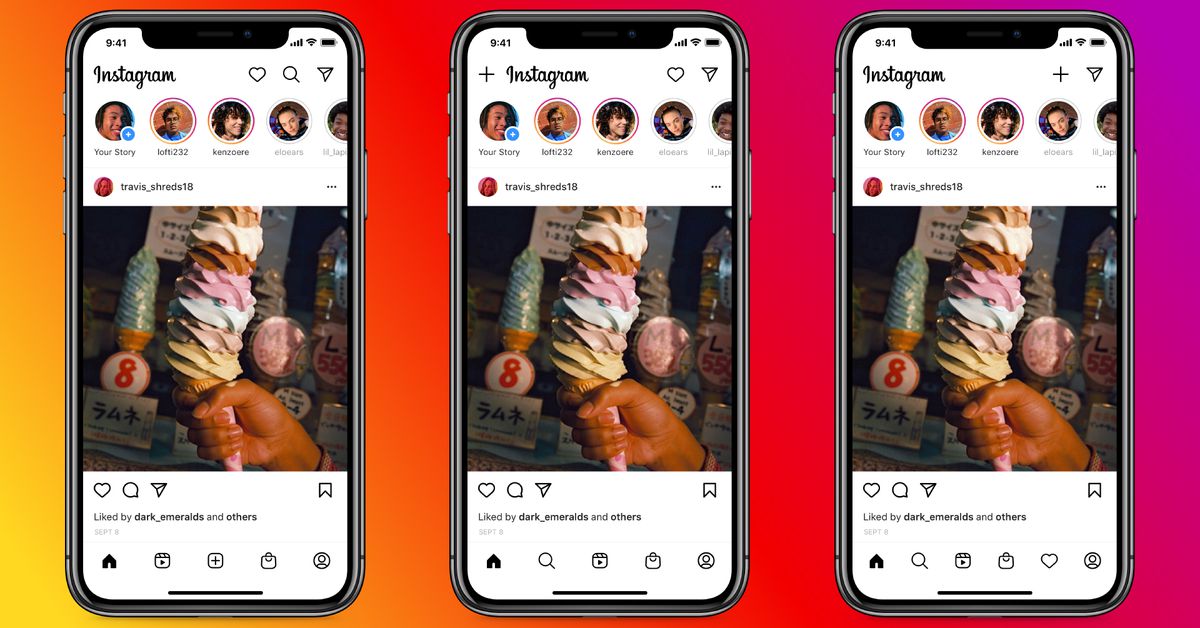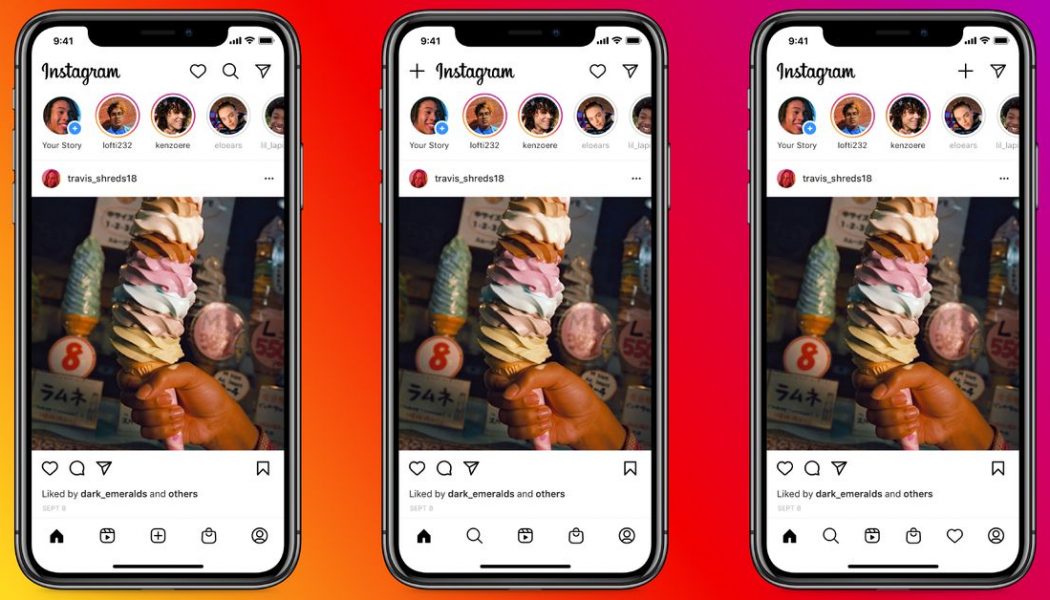
One reason I enjoy writing a column about the intersection between big technology platforms and democracy is that on most days, it feels like one of the most important things in the world. But on this strangest of days in San Francisco, where wildfires up and down the west coast blotted out the sun and gave the town the eerie feel of permanent midnight, it was hard to pay the usual attention to my beat. My colleague Vjeran Pavic flew a drone over Sutro Tower this morning and captured the surreal imagery. The word “apocalypse” gets thrown around with truly unfortunate frequency these days, but on Wednesday nothing else really fit.
Distracting as the orange sky outside my window has been, I had one fascinating thing to occupy my attention: a conversation I had on Tuesday with Adam Mosseri, the person who leads Instagram. The occasion was an announcement the company made this morning about the formation of a new “equity team” that will be tasked with examining how the app may be underserving different groups of people. (The Wall Street Journal had reported that the company was building such a team in July.)
Here’s how Mosseri described the team in a blog post on Wednesday:
The Equity team will focus on creating fair and equitable products. This includes working with Facebook’s Responsible AI team to ensure algorithmic fairness. In addition, they’ll create new features that respond to the needs of underserved communities. Seperate from this new product group we’re also hiring a new Director for Diversity and Inclusion for Instagram who will help to advance Instagram’s goal of finding, keeping, and growing more diverse talent.
The team is already working on projects including “comment warnings,” which will scan your post and ask you if you really want to say that mean thing you’re about to say; re-examining policies about blackface and posts related to the Jewish community; and reviewing the app’s recommendation guidelines, which determine what can show up in Instagram’s “explore” tab.
The moves come after a summer in which racial justice surged to the forefront of discussions at Facebook and other companies around the country.
“Having a dedicated team, I think, is a really important step,” Mosseri said over video chat.
I certainly like what I hear so far. The question is whether they can retain their power over time — or whether their ideas will get sidelined by product managers on other teams worried about the potential impact of these moves on their targeted metrics. That’s not a concern unique to Facebook or Instagram — it’s a challenge at any company who creates a dedicated team to address something that arguably every employee should be concerned about. (See also: corporate environmental sustainability efforts.)
So: we’ll see.
Mosseri also chatted me up about what promise to be some major changes to Instagram’s design: namely the insertion of two new tabs, which the company is now testing globally. One tab is for Reels, the company’s effort to occupy the short-form video space that TikTok carved out in the world; the other is for shopping, which Instagram created a dedicated space for in July.
At most apps, the addition of a tab or two wouldn’t be a big deal. But this is Instagram we’re talking about — an app whose dedication to pixel-polishing is legendary. (“Simplicity” and “craft” are two of the company’s three core values.) It also has a user base heavy with designers, photographers, and know-it-alls, and even just redesigning the app’s logo has been known to send them into fits. (Those people were all wrong, by the way; few re-branding exercises in recent years have held up as well as Instagram’s 2016 refresh.)
But it’s in the nature of social apps to try to capture more of their users’ behavior in dedicated features — whether that behavior is already happening in the app or not. Shopping is already a core behavior on Instagram, and makes sense as a dedicated feature. Reels is an effort to recreate the magic of TikTok on Instagram, and is a much dicier proposition.
And both are arriving in an app that already feels somewhat crowded. The writer and investor Eugene Wei criticized the current design this summer in an essay about the rise of TikTok:
Instagram is some strange hybrid mix of social and interest graph, and now it’s also a jumble of formats, with a Stories feed relegated to a top bar in the app while the more stagnant and less active original feed continues to run vertically as the default. Messaging is pushed to a separate pane and also served by a separate app. Longer form videos bounce you to Instagram TV, which is just an app for videos that exceed some time limit, I guess? And soon, perhaps commerce will be jammed in somehow? Meanwhile, they have a Discover tab, or whatever it is called, which seems like it could be the default tab if they wanted to take a more interest-based approach like TikTok. But they seem to have punted on making any hard decisions for so long now that the app is just a Frankenstein of feeds and formats and functions spread across a somewhat confused constellation of apps.
So adding two tabs to all of that? It’s going to be tricky.
“We’re gonna get a lot of heat,” Mosseri said. “Any time we move the tabs around, or make some big changes — I expect a lot of really derogatory DMs.”
The reason is that you can’t just add two tabs to the bottom row of the app — you have to move at least one existing tab to make room for it. So maybe the search button and “composer,” the button you tap to add a new photo, will move to the top right, next to the Direct inbox. Or maybe the activity feed, which tells you who liked your posts and who followed you, will jump up next to your DMs, and the composer will float to the left of the Instagram logo. There are currently three designs now in testing.
Even if you think shopping and short-form video are huge opportunities for Instagram — and I do — these moves may push the notions of craft and simplicity to the breaking point. At the very least, they make the app feel more like Facebook — an app with so many tabs that they change dynamically for each person depending on which they use most frequently. (And has dozens they may never use at all.)
So why do it?
Mosseri says Instagram wants to help individual creators earn their livelihoods on the app, whether by becoming video stars or e-commerce moguls. From Patreon to TikTok, it’s clear that that’s where the opportunity is in social apps, he said.
“We’ve been thinking a lot this year about what Instagram is about, and keep coming back to this idea of emergent culture — of culture on the fringe,” Mosseri said. “I think we always have focused on emerging culture — it’s why we focused on youth, and it’s why we focused on creators. These are groups that set trends in many different industries, in many different countries around the world.”
Given the amount of shopping that transpires already on Instagram, adding a dedicated tab felt like a no-brainer. (The company came close to releasing a standalone shopping app, and Mosseri says he would still consider doing one at some point.)
“Even before the pandemic there was this massive shift of commerce from offline to online — and COVID-19 accelerated that by, I don’t know, half a decade maybe,” he said.
Instagram’s twist on e-commerce is to have individual creators do the selling, by creating collections of products and writing their own captions or making videos about them. (They don’t yet get a cut of the sales, but if they move a lot of merchandise they can win big brand deals for sponsored content.)
Reels is trickier, since Instagram’s efforts around video have been less successful. IGTV, the company’s effort at promoting longer vertical videos, doesn’t even merit placement on the home screen. (It’s available as a tab on the explore page, as well as in a standalone app.) And the video that people love watching on Instagram — their friends’ ephemeral stories — is very different in kind than the endlessly remixed memes that launched TikTok to great success.
An early criticism of Reels was that it was simply too hard to find. TikTok works because you just open it and the app starts showing you interesting videos, even if you haven’t signed in yet. With Reels, you had to navigate to the explore page and tap into a separate Reels feed, if you knew to look for it at all.
A dedicated Reels tab solves that problem, effectively adding a TikTok “For You”-style page to the home screen.
“We’re really just trying to lean in to the short-form video creator ecosystem,” Mosseri said. “TikTok willed that into existence … Obviously, they are on to something. You’re seeing short-form video growing on a number of platforms at this point.”
Looking at the tests designs, I can’t say I have a strong preference for any of them: my eyes are still getting used to seeing those familiar icons in such seemingly strange new places. But I have reason to believe that eventually, Instagram will get it to work: its spirit of cautious but steady iteration has generally served it well.
And, as Mosseri notes, stasis isn’t really an option.
“When you’re as large as we are, competition is always a risk,” Mosseri said. “But an even bigger issue is that what you do becomes irrelevant.”
Governing
⭐ ByteDance is in talks with the US government about possible arrangements that would avoid a full sale of TikTok’s US operations. The move comes after the Chinese government took steps that make a sale to a US tech giant like Microsoft more difficult. Miriam Gottfried, Georgia Wells and Kate Davidson at The Wall Street Journal have the story:
A number of options remain on the table, the situation is fluid and a sale is still a possibility, the people said. Even if there isn’t a full sale, the outcome would likely involve some sort of restructuring of TikTok, one of the people said. That could involve a deal in which TikTok takes on a U.S. technology partner that helps secure its data and potentially takes a minority stake.
The main concern for government officials involved in the talks has been the security of TikTok’s data and keeping it out of reach of the Chinese government, said people familiar with the negotiations.
⭐ Ireland’s Data Protection Commission sent Facebook a preliminary order to suspend data transfers about EU users to the US. It’s the first significant step EU regulators have taken to enforce a July ruling about data transfers. That ruling restricted how companies like Facebook can send personal information about Europeans to the US. Here are Sam Schechner and Emily Glazer at The Wall Street Journal:
To comply with Ireland’s preliminary order, Facebook would likely have to re-engineer its service to silo off most data it collects from European users, or stop serving them entirely, at least temporarily. If it fails to comply with an order, Ireland’s data commission has the power to fine Facebook up to 4% of its annual revenue, or $2.8 billion.
More than 40 human rights groups are calling on Facebook CEO Mark Zuckerberg to suspend Ankhi Das, the company’s public policy director for India. The move comes after Das was revealed to have not enforced hate speech policies for politicians from India’s ruling party who posted anti-Muslim content. (Pranav Dixit / BuzzFeed)
Mark Zuckerberg said it is “just wrong” to consider Facebook a right-wing echo chamber, even though conservative voices usually top lists of the platform’s most-engaged content. The company likes to cite what content users view the most, which favors legacy news organizations, over what they engage with the most, which does not. (Mike Allen and David Nather / Axios)
Amazon has spent $24,000 to kill Portland’s facial recognition bill, which would be the strongest ban on the technology in the United StatesS if it passes. The law would ban the use of facial recognition technology by both the public and private sector. Amazon’s concern is that this would create a nationwide legal precedent. (Edward Ongweso Jr / Vice)
Most Americans think social media can lull people into believing they are making a difference when they’re not — although they also think the platforms are an important tool for political activists. (Pew Research Center)
Industry
⭐ TikTok is suppressing hashtags related to LGBT content in Eastern Europe and the Middle East, according to a report from the Australian Strategic Policy Institute, a think tank. Rather than banning the content outright, the app is making it difficult for people to find. Here’s Jane Li at Quartz:
According to ASPI, other major hashtags that are shadow banned by the app include “#acab,” an acronym for “all cops are bastards,” “#Putin is a thief” in Russian, “#Jokowi,” a nickname for Indonesian president Joko Widodo, and “#why do we need a king” in Thai, amid a wave of protests in Thailand that are openly defying the monarchy.
ASPI also found that TikTok categorizes most of the shadow-banned LGBT hashtags in the same way that it does terrorist groups such as ISIS, swear words, and illicit substances such as cocaine. Some of these hashtags were also categorized by the app as non-existent despite the terms having been tagged in videos on the app.
TikTok’s success is based in part on its ability to cater to lurkers — people who consumer but rarely create content. There are twice as many lurkers than content creators on TikTok, according to some estimates. (Shreya Sudarshana and Johnathan Zhou / Medium)
TikTok husbands bear little resemblance to the behind-the-scenes Instagram husbands of old. On the video sharing app, they’re part of the fun, often featuring in videos and engaging with the creator. (Jillian Goltzman / Glamour)
Doctors and scientists are using TikTok to combat Covid-19 misinformation. Some are becoming TikTok influencers, and incurring harassment as a result. (Helen Santoro / Wired)
Facebook COO Sheryl Sandberg downplayed concerns about the company’s size by comparing the choice people have in social media to the relative lack of choice they have when choosing their home electricity provider. (Alex Heath / The Information)
Epic announced a new, three-week-long concert series that will take place on Fortnite’s party royale island. It will be broadcast from a brand-new Los Angeles studio built specifically for in-game concerts. (Andrew Website / The Verge)
Startups are trying to recreate the office water cooler online, now that employees are working remote. Some work as Slack plugins, randomly pairing you with colleagues on the chat platform. (Katherine Bindley / The Wall Street Journal)
Things to do
Stuff to occupy you online during the quarantine.
Visit the WinAmp skin museum. It really whips the llama’s ass.
And finally…
are you working on side projects or do u have kids
— Donna Amos ☕ (@donnacamos) September 7, 2020
Me wearing earrings, mask, glasses and earphones…
My ears: Do you want me to hold your bag too?
— GRACE KAY (@AnotherKOT) September 7, 2020
Talk to us
Send us tips, comments, questions, and test Instagram designs: casey@theverge.com and zoe@theverge.com.










